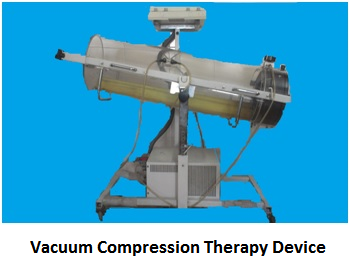Vacuum Compression Therapy
Original Editor - Sheik Abdul Khadir
Top Contributors - Sheik Abdul Khadir, WikiSysop, Kim Jackson and Lucinda hampton
Introduction[edit | edit source]
Device [edit | edit source]
- Vacuum chamber
- Pressure Monitor
- Rubber cuff
- Compressor Unit.
Physiology[edit | edit source]
References[edit | edit source]
- ↑ Akbari et al ; Effects of vacuum compression therapy on healing of diabetic foot ulcers :Randomized control trial ;JRRD; Vol 44; No 5;2007; 631-636.
.







